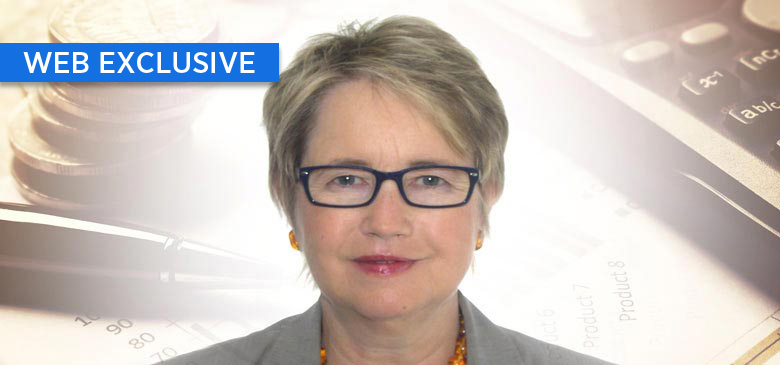
My first step was to enter a training programme at Price Waterhouse, now PwC. Through that scheme, I qualified as a chartered accountant, with my experience during qualification spanning the full range of chartered accountancy functions.
It was an exciting time, as I was involved in a range of major audits – from dawn raids on banks to count the cash and securities in the vaults to climbing oil tanks at midnight in Canvey Island to check they contained the reported levels of oil.
All in all, a great package of on-the-ground training as a chartered accountant, primarily doing audit, which I think is a fantastic way for anyone to start their career. And from that point, after qualifying, I went on to specialise in areas such as tax and treasury – mainly in the financial services sector.
I joined the ACT to take the AMCT qualification at a stage of my career where I moved across from another finance role to lead the group’s corporate treasury team. At that stage, the ACT was developing pretty fast, establishing itself as a central point for corporate treasurers. So I believed that, wherever possible, it was right for members of our treasury team to hold that professional qualification.
Doing the exams was extremely useful in helping me to develop a comprehensive knowledge of treasury – exploring wider aspects, not just of the tasks of immediate concern to me, but other areas that I needed to understand to fulfil the role effectively.
I’ve been very lucky to work at a range of companies at times of significant economic challenge, when markets were changing rapidly. And one of the most significant was Standard Chartered Bank, where I worked for almost 11 years.
I led the corporate treasury team at a point when the group was positioned to take full advantage of emerging growth in the Asian economies – so we needed to raise additional capital to support our expansion in those markets.
That gave us in the treasury team fantastic opportunities to contribute to the overall strategy, along with supporting the bank’s capital growth. It also gave me personally, and my team, experience with handling a very extensive range of capital-raising instruments.
That was later on in my career, about 10 years ago. I’d built up a significant amount of experience and I was starting to consider what the future held, and what I could do with that experience.
As my career had always been in finance, I judged that the natural progression of executive roles would have been more of the same types of role. But, given my experience of strategy, as both a corporate treasurer and general finance manager, I felt that I would be well suited to a non-executive portfolio.
I discussed that with the firm where I worked, which at that time was the global commodities and securities group ED&F Man, and they said they were happy to give me a bit of space when required to start building that portfolio. So at first I took some opportunities to learn the ropes by doing non-exec work in the not-for-profit sector and broadened the scope of my job by joining some internal committees such as pensions CSR and so on.
That’s how my portfolio started off: I joined the board of a further-education college, I became chair of a small arts charity, and I also joined the ACT’s policy and technical team – all of which expanded my knowledge and experience.
That’s right. For five years, I built up my NED experience concurrently with continuing my executive role. And then I decided I wanted to get some commercial roles, and I realised that would be difficult to do while holding down a busy executive job.
So I decided to step down from my executive role, which took a bit of time – the firm had to work out the logistics of appointing a successor, and asked me to remain involved as a consultant for a period.
That gave me time to get out there and meet the relevant headhunters. Then I started my first commercial role in 2014.
Every change in your career involves learning new things, and there’s lots of material online about directors’ responsibilities.
When you join the board of a charity, you’re always given links to the Charity Commission’s explanations of the duties of trustees.
I also joined various networks, such as the Financial Times non-executive network, the ICAEW non-executive network, Women on Boards – there’s a whole range of networks that give you a firm grounding and people you can talk to. For example, for my charity work, I belong to a body called the Association of Charity Chairs, which has evening meetings and breakfast meetings.
Various topics are covered in the formal part of the meeting, and then you can network with people who are doing similar roles and get to know those who may be helpful if you need to talk something through.
It’s very interesting because a whole range of new challenges are coming up all the time. I’m on the board of Ford Credit, which is part of Ford Motor Company, and the whole face of the motor industry had changed in my four years on the board, with the introduction of autonomous and electric vehicles. In addition to that, of course, we have Brexit – which poses challenges for a number of industries.
Even as recently as four years ago, neither of those would have been foreseen – and as a director, you’re right at the centre of those seismic developments. It does mean that you need to put in a lot of hours to stay in touch with economic and technical change.
You also have to manage a lot of admin. Just things like getting emails to work efficiently – it seems easy when you’ve got an IT department to ring up, but if you have to do it yourself, it’s a lot more challenging. You find that each company you oversee uses a different type of software, a different email system and a different app for board papers, so you have to be very flexible.
But if you want to use your executive experience in new and challenging ways, I thoroughly recommend planning a non-executive career.
For more on Charlotte’s experience as an NED, check out our article ‘How to be a non-executive director’.
Matt Packer is a freelance business, finance and leadership journalist
